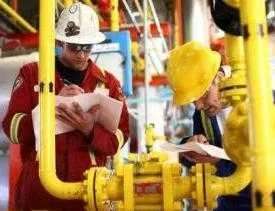Description
Course Name: Advance Diploma in Industrial Safety
Course Id: ADIS/Q0001.
Education Qualification: 10th Pass
Duration: 370 Hrs.
How You will Get Diploma Certificate:
Step 1- Select your Course for Certification.
Step 2- Click on Enroll Now.
Step 3- Proceed to Enroll Now.
Step 4- Fill Your Billing Details and Proceed to Pay.
Step 5- You Will be Redirected to Payment Gateway, Pay Course and Exam Fee by Following Options.
Card(Debit/Credit), Wallet, Paytm, Net banking, UPI and Google pay.
Step 6- After Payment You will receive Study Material on your email id.
Step 7- After Completion of Course Study give Online Examination.
Step 8- After Online Examination you will get Diploma Certificate soft copy(Scan Copy) and Hard Copy(Original With Seal and Sign).
Step 9- After Certification you will receive Prospect Job Opportunities as per your Interest Area.
Online Examination Detail:
- Duration- 120 minutes.
- No. of Questions- 60. (Multiple Choice Questions).
- 10 Questions from each module, each carry 10 marks.
- Maximum Marks- 600, Passing Marks- 40%.
- There is no negative marking in this module.
| How Students will be Graded: | ||
| S.No. | Marks | Grade |
| 1 | 91-100 | O (Outstanding) |
| 2 | 81-90 | A (Excellent) |
| 3 | 71-80 | A (Very Good) |
| 4 | 61-70 | B (Good) |
| 5 | 51-60 | C (Average) |
| 6 | 41-50 | P (Pass) |
| 7 | 0-40 | F (Fail) |
Benefits of Certification:
- Government Authorized Assessment Agency Certification.
- Certificate Valid for Lifetime.
- Lifetime Verification of Certificate.
- Free Job Assistance as per your Interest Area.
Syllabus
Advance Diploma in Industrial Safety
Occupational Health and Hazards
Safety and Health Management: Occupational Health Hazards, Promoting Safety, Safety and Health training, Stress and Safety, Safety Psychology, Safety information system, Ergonomics – Introduction, Definition, Objectives, Advantages, Ergonomics Hazards – Musculoskeletal Disorders and Cumulative Trauma Disorders, Importance of Industrial safety. Safety of Environment, Radiation and Industrial Hazards: Types and effects of radiation on human body, Measurement and detection of radiation intensity, Effects of radiation on human body, Measurement – disposal of radioactive waste, Control of radiation, Indian Standards, Electrical Hazards and Hazards in Construction Industry: Safe limits of amperages, voltages, distance from lines, etc., Joints and connections, Overload and Short circuit protection, Earthing standards and earth fault protection , Protection against voltage fluctuations, Effects of shock on human body Hazards from Borrowed nutrals. Fire and other Hazards: General causes and classification of fire, Detection of fire, extinguishing methods, fire fighting installations with and without water, Machine guards and its types, automation. High pressure hazards, safety, emptying, inspecting, repairing, hydraulic and nondestructive testing, hazards and control in mines.
Safety at Workplace
Safe use of machines and tools: Shaping Safe use of hand tools: Safe use of various types of hand tools used for metal cutting, torsion tools, shock tools, non sparking tools, portable power tools, Ergonomics of machine guarding, Guarding of different types of machinery including special precautions for paper, rubber and printing machinery, wood working, Working in different areas: Working in confined spaces, Working Underground, Working at heights – use of stairways, clamps, working platforms, ladders of different types, Boatswain’s chair and safety harness working on roofs, Lifting machinery lifts and hoists. Safety against falling bodies, Plant design and Housekeeping: Plant layout, design and safe distance, Ventilation and heat stress, Significance of ventilation, Natural ventilation, Mechanical ventilation Air conditioning, National Building code part VIII and Building service, Thermal comfort, Indices of heat stress.
Accident Prevention Techniques
Principles of accidents prevention: Definition: Incident, accident, injury, dangerous occurrences, unsafe acts, unsafe conditions, hazards, error, oversight, mistakes, etc. Accident Prevention: Theories / Models of accident occurrences, Principles of accident prevention, Accident and Financial implications, Theories and principles of accident causation: The effect of accident, unsafe act, unsafe condition, unpredictable performance, Human factors contributing to accidents – causes for unsafe acts, ii. Safety and psychology -Theories of motivation and their application to safety, Consequences of accident, First aid: Need of First aid. Body structure and Functions, Position of causality, the unconscious casualty, fracture and dislocation, Injuries in muscles and joints, Bleeding, Burns, Personal Protective Equipment’s, Personal Protective Equipment’s: Need, selection, supply, use, Respiratory personal protective devices, Training maintenance, precaution and care of PPE, Detection equipment, Personal protective devices for head, ear, face, eye, foot, knee and body protection.
Safety Management System and Law
Legislative measures in industrial safety: Functions of safety management, ILO Convention and Recommendations in the furtherance of safety, health and welfare, Environment Protection Act, Occupational Safety, Health and Environment Management: Safety Management: Organizing for safety, Health and Environment, Organization : Structure, Function and responsibilities Safety Committee : Structure and function The competent person in relation to safety legislation – duties and responsibilities. Competence Building Technique (CBT), Concept for training, application of computer, multimedia, communication, directing safety: Definition, process, principles and techniques. Leadership – role, function and attribution of a leader, team building and group dynamics. Financial cost to individual worker and family, organization and society.
Safety in Industries
Classification of Hazardous materials, Precautions in the process and operations involving explosives, flammables, toxic substances, dusts, gases, vapor cloud formations and combating, Control, precautions and prevention, specific safety measures for certain chemical industry like fertilizer, insecticide, pesticides-choler-alkali, explosives, polymer plants, Receiving, Storing and Handling of chemicals, Chemicals Compatibility Considerations, Transfer of chemicals by pipelines within and outside installations, above and underground and submarines, Safety Precautions for working on pipelines, safe entry procedures to confined spaces including reaction vessels, Determination of fire load.. Design of building plant, exists, etc. for fire safety and Fire resistance of building materials.
Industrial Visit and Project report
Compulsory project on Industrial safety is to be completed and a report is to be submitted to the department, In-plant Training and Industrial Visits, In-plant training of 3 weeks is compulsory and a Report to be submitted to the Department with due Certification of the industry where training is done, Minimum 3 Industrial Visits are compulsory.






